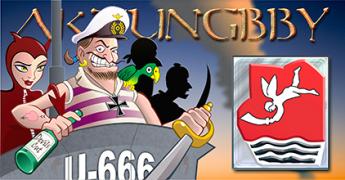 02-26-21, 01:56 AM
02-26-21, 01:56 AM
|
#26
|
|
Gefallen Engel U-666
Join Date: Jul 2013
Location: On a tilted, overheated, overpopulated spinning mudball on Collision course with Andromeda Galaxy
Posts: 28,786
Downloads: 24
Uploads: 0
|
 VIC (Victual Inshore Craft) puffers of WWII
VIC (Victual Inshore Craft) puffers of WWII
Quote:
Originally Posted by gap

Hi guys,
in the past weeks I have been collecting information on WWII-era puffers. I have identified 78 private-owned 20-m puffers and I managed to find funnel colors and house flag used by some of their owners. I would like to add those features, but before I do that I would like to hear from the most knowledgeables on naval history among you (Sailorsteve, Iambecomelife, are you there?  ).
My doubts are:
I know military vessels and ships which sailed in convoys were painted either light grey or with camouflage patterns, but what about small coastal vessels? Were they repainted in plain color as the war approached, or they retained their original paint schemes?
From the little information I have, house flags could be hoisted on the main mast but apparently their usage is not subject to any strict regulation. My question is: how commonly they are used and how realistic would have been for a vessel to fly one in wartime, when it vivid colors could have unnecessarily given up own position to the enemy? |
I don't think they were repainted as they were considered indispensibly expendible and 100 were ordered built: Clearly the keels tended be rust red (I just painted my cousins 40' Two masted steel hull ketch that a year ago-nuthin good goes outta style)  https://puffersandvics.org/VIC_index.htm <viewed each on case by case basis In browsing the predominantly black and white photos during or near the end of WWII even the the B/W pics show no attempt at camouflage-the pilot house and stack are different from the black hull and the predominantly rust red keel colors: ie VIC 23 in 1942; just launched: https://puffersandvics.org/VIC_index.htm <viewed each on case by case basis In browsing the predominantly black and white photos during or near the end of WWII even the the B/W pics show no attempt at camouflage-the pilot house and stack are different from the black hull and the predominantly rust red keel colors: ie VIC 23 in 1942; just launched: 
That said: the longer 85 ft VIC 63 is described in this photo as still wearing her wartime grey.  <keel shows shade variation to hull <keel shows shade variation to hull
Quote:
|
The puffers were typically divided into "shorehead" (or coastal) boats, with a maximum length of 66 ft, and "outside" (sea-going) boats, of 80 ft. The shorehead boats were within the dimensions of the Forth & Clyde Canal sealocks, making it possible for them to enter the inland waterway system, though the outside boats were more suited to the Atlantic conditions off the west coast.
|
Bottom line: the 66.8 Ft ones with safer shorehead 'inshore canal/waterway duty' need no camo; the 85 ft larger ones had wartime gray?? I cannot find any puffer sunk by enemy action... 
__________________

"Only two things are infinite; The Universe and human squirrelyness; and I'm not too sure about the Universe"
Last edited by Aktungbby; 02-26-21 at 02:19 AM.
|

|

|